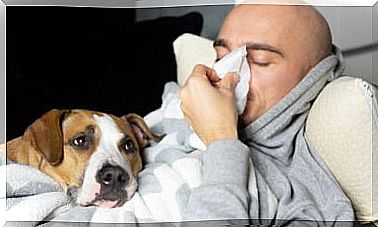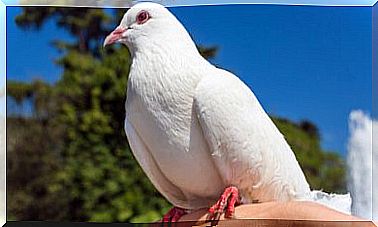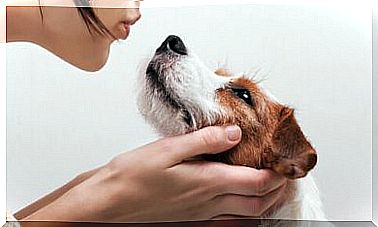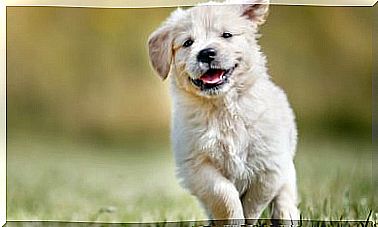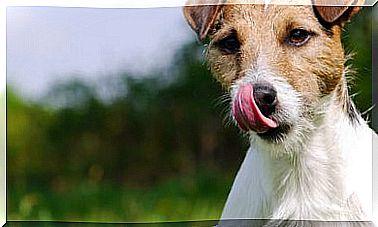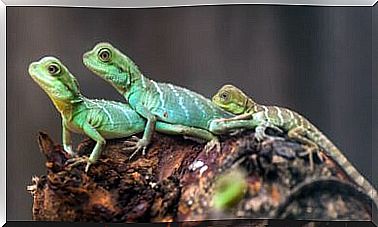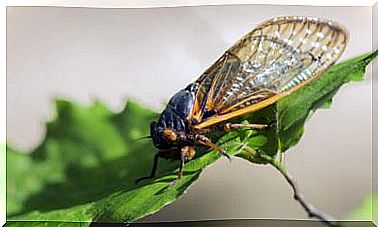Greyhound

The Greyhound, also known as the English Greyhound, is one of the fastest breeds of animals on the planet. His speed has been recognized for centuries, and he was given a privileged position among high society. Today we will talk about the most important aspects of them.
The swift greyhound
The origin of these dogs is unclear; they are said to have arrived in the British Isles during the 10th or 11th century, but it is not certain. The truth is that the Celts, through their migratory waves, brought them with them while they settled in the region.
After this, the greyhound began to occupy ever higher places in British societies : it was forbidden for a peasant to have a dog of this species because the nobility classified them of high lineage.
This is likely due to the fact that the ancestors of these animals were used as pets by the ancient Egyptian pharaohs. The images of these animals are engraved in the hieroglyphs found in the pyramids of the region and they closely resemble our current greyhounds.
Wherever they come from, these dogs have become famous for their speed, reaching a top speed of 67 km / h, only surpassed by cheetahs and racehorses. Also, greyhound racing is one of the most popular sports in the world today.
Physical aspects
The structure of this dog presents dynamism-oriented characteristics that make its speed stand out on flat terrain. It won’t look very robust, but it has great ability that makes it look like a gazelle when running.
Head
- It is elongated with very fine features, and has an elongated scissor-shaped articulated snout.
- The mouth features all of its teeth fitting well together.
- The eyes have little separation between them, which results in a rather serious look.
- The ears appear high on the head, are medium-sized and hang down to the height of the muzzle.
Body
- It is elongated to give you greater speed.
- He is slim, and exhibits great musculature.
- His stomach seems sunken, but it is due to the shape of his body, which gives that impression.
- Its limbs are long and powerful, very agile to change direction at any time.
- The tail is long, and celga between the hind legs most of the time.
- Its coat is short and fine, and it has gray, brown and black colors, without spots. The brindle color is also acceptable.
Temperament
The Greyhound has a very keen hunting instinct, and can become stubborn and almost untamed in most cases. For this reason, it is not recommended for first-time trainers, as they are very temperamental.
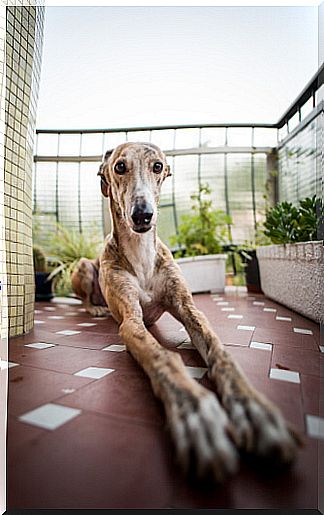
Under the tutelage of a firm hand, this species can become the ideal pet; Usually, he likes to sleep on the couch during his free time and pick up whatever is thrown at him in record time. This exercise is ideal for them, as it will burn their energies, quench their primal instincts and avoid unwanted behaviors.
If he lives with other small pets, it is important that you teach him the maximum obedience possible. The years of hunting will not be forgotten as quickly as you think it will; The dog can end up hurting other pets and even making them a part of their dinner if allowed.
With a lot of effort, the greyhound can become the ideal pet to have at home. To do this, we recommend you train the puppy with obedience exercises, introduce them to other people and animals appropriately, and provide all the speed activity that you can provide.
Health and disease
It is a fairly healthy breed, which does not present in most cases any serious disease. However, despite its high speed, the greyhound is not exempt from diseases that can eventually catch it.
Some can become quite serious if they are not treated in time. Stomach torsion is quite common, as is retinal atrophy.
Also, some specimens have high sensitivity to chemical compounds ; If you have a dog of this species, keep these products away from him.
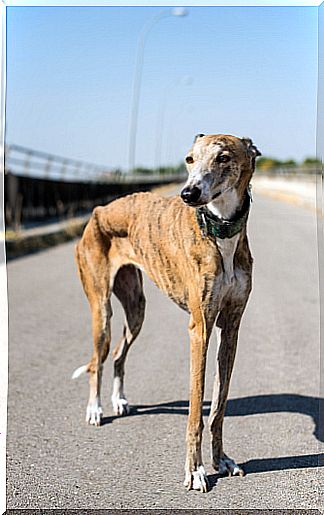
Apart from this, it is a dog with few needs in terms of health, since it is very resistant despite its small but flexible body. A weekly brushing will remove dead hairs from his coat, and a visit to the vet every six months will never hurt.
If you walk it a lot in the field, you must be very aware of its fur, since they can pick up parasites such as ticks that can transmit blood diseases.
As far as bathrooms are concerned, you should only give one when you think it’s necessary ; and it is that its short coat prevents it from accumulating excess dirt.
